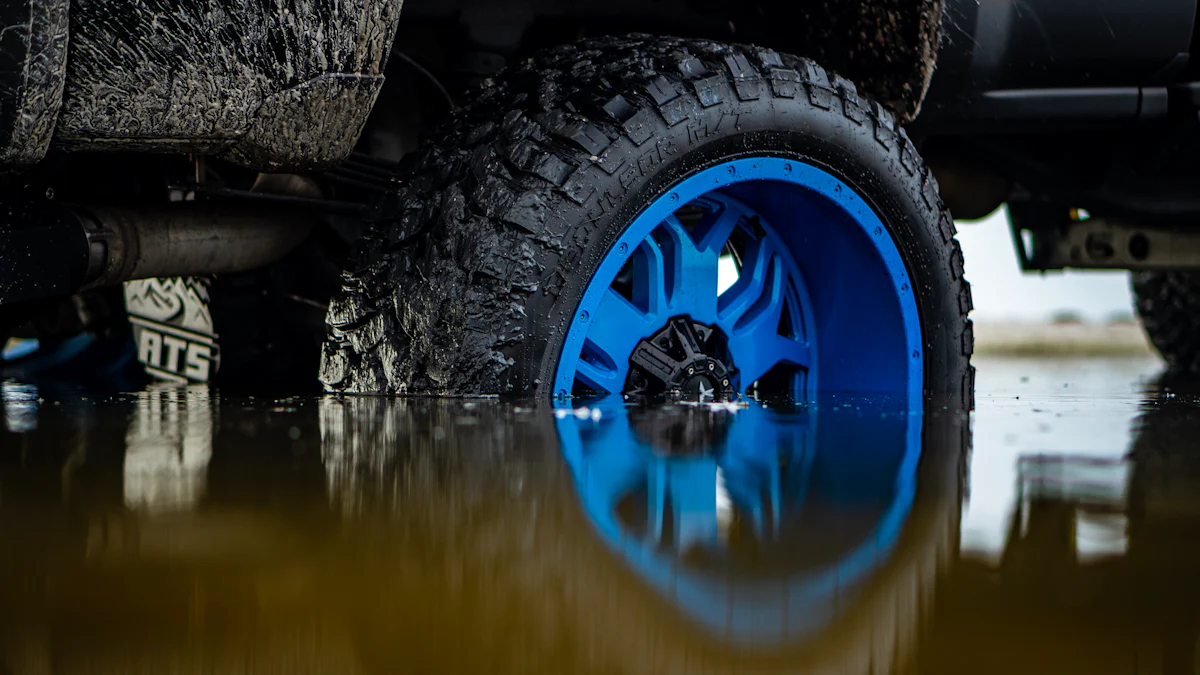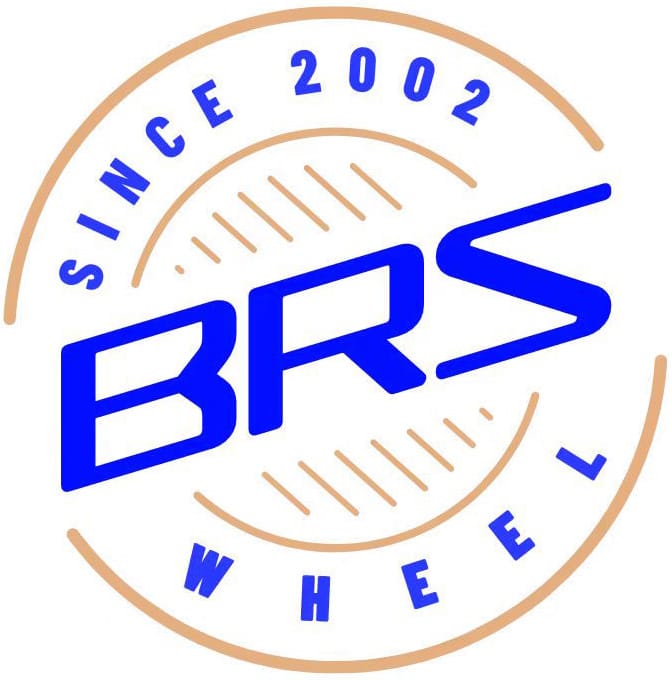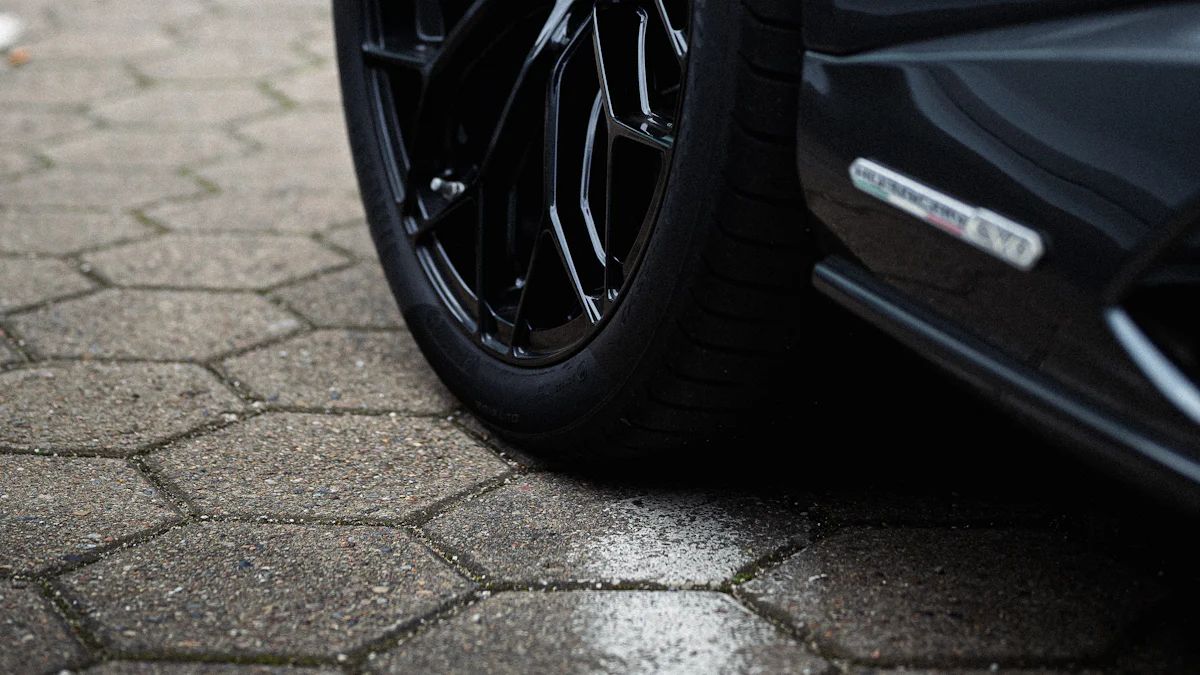
Installing ATV beadlock wheels correctly is essential for your safety and your vehicle’s performance. Proper installation ensures that your tires stay secure, even on the toughest trails. Beadlock wheels offer several advantages that enhance your riding experience:
- They improve traction by allowing lower tire pressures, which increases grip on loose or uneven terrain.
- They reduce the risk of tires unseating from the wheel, keeping you safer during rugged rides.
- They enhance performance by helping your tires conform to the terrain, delivering a smoother ride in challenging conditions.
By following a step-by-step guide, you can install these wheels with confidence and enjoy their full benefits.
What You Need Before You Start
Before installing ATV beadlock wheels, gather the right tools, materials, and safety equipment. Proper preparation ensures a smooth installation process and reduces the risk of errors.
Tools and Materials for Beadlock Wheel Installation
Essential Tools
You’ll need several tools to complete the installation effectively. Here’s a list to guide you:
- Torque wrench capable of low settings (as low as 10 ft-lbs).
- Lug wrench for removing and securing lug nuts.
- Tire iron for mounting and adjusting the tire.
- Valve stem core removal tool and installation tool.
- 1/2″ socket with a 3″ extension for tightening bolts.
- Tire pressure gauge to ensure proper inflation.
- Sturdy elevated platform to work on the wheels.
- Stool or moving blanket to protect your back during the process.
Materials
In addition to tools, gather these materials:
- ATV beadlock wheels and compatible tires.
- Anti-seize lubricant to prevent bolts from sticking.
- Tire lube to make mounting the tire easier.
Safety Precautions
Wear Protective Gear
Safety should always come first. Wear gloves to protect your hands from sharp edges and safety glasses to shield your eyes from debris.
Ensure a Stable Work Environment
Set up your workspace on a flat, stable surface with proper lighting. This minimizes the risk of accidents and ensures you can see every detail during the installation.
Preparing the Wheels and Tires
Inspect the Wheels and Tires for Damage or Wear
Before starting, inspect the rim and tire carefully. Look for cracks, dents, or bends on the rim that could interfere with proper installation. Check the tire for cuts, bulges, or other damage that might compromise its performance.
Clean the Bead Area and Install the Valve Stem
Clean the bead area of the wheel to remove dirt or debris. This ensures a proper seal between the tire and the wheel. Next, install the valve stem securely using a valve stem installation tool.
By following these steps, you’ll set yourself up for a successful installation. Proper preparation not only saves time but also ensures your beadlock wheel hardware functions as intended.
Step-by-Step Guide to Install Beadlock Wheels

Mounting the Tire on the Beadlock Wheel
Position the inner bead over the backside of the wheel
Start by preparing your workspace. Place the wheel on a protective mat to avoid scratches. If the tire feels stiff, leave it in the sun for a while to soften it. This makes handling easier. Inspect the wheel and tire to ensure they are the correct size and free from damage. Apply tire mounting lubricant generously to the inner bead of the tire. Align the tire with the wheel, ensuring the valve stem is positioned correctly. Push the inner bead over the backside of the wheel, working your way around until it sits evenly.
Use tire lube to slide the outer bead onto the wheel
Apply tire lube to the outer bead of the tire. This reduces friction and makes the process smoother. Use a tire iron if necessary to guide the outer bead onto the wheel. Work slowly and carefully to avoid damaging the tire or wheel. Once the outer bead is in place, check that both beads are seated evenly around the wheel.
Securing the Beadlock Ring
Align the beadlock ring with the tire bead
Position the tire bead over the inner rim flange. Spin the wheel slightly to check for even alignment. If you notice any gaps, adjust the tire before proceeding. For stubborn areas, use a rubber mallet to gently tap the edges of the tire bead into place. Placing the wheel and tire on a sturdy 5-gallon bucket can help gravity pull the tire downward, aiding alignment.
Tighten the bolts in a star pattern to ensure even pressure
Place the beadlock ring over the tire bead, ensuring it sits flush with the wheel. Begin tightening the bolts by hand to hold the ring in place. Then, use a torque wrench to tighten the bolts in a star pattern. This ensures even pressure and prevents the ring from warping. Gradually increase the torque until you reach the manufacturer’s recommended setting.
Installing the Wheels on the ATV
Align the wheel with the hub and secure it
Clean the hub and wheel mating surfaces to remove dirt, rust, or debris. Align the wheel with the hub, ensuring the bolt holes match up. Slide the wheel onto the hub carefully.
Tighten the lug nuts to the manufacturer’s recommended torque
Hand-tighten the lug nuts to hold the wheel in place. Use a torque wrench to tighten the nuts in a crisscross pattern. This ensures even pressure and prevents the wheel from becoming misaligned. Check the manufacturer’s specifications for the correct torque setting. After driving 50-100 miles, re-torque the lug nuts to ensure they remain secure.
By following these steps, you can successfully install beadlock wheels on your ATV. Proper alignment and torque settings are crucial for safety and performance.
Final Checks After Beadlock Wheel Installation
Inspect the beadlock ring for even pressure
After securing the beadlock ring, you need to inspect it for even pressure. Uneven pressure can lead to air leaks or tire damage during use. Start by visually examining the beadlock ring. Look for any gaps between the ring and the wheel. These gaps indicate uneven pressure or improper alignment.
Use your torque wrench to check the tightness of each bolt. Compare the torque readings to the manufacturer’s recommended settings. If you find any bolts that are too loose or too tight, adjust them immediately. Tighten or loosen the bolts incrementally to maintain balance. Always follow the star pattern when making adjustments. This ensures the pressure distributes evenly across the ring.
Tip: Rotate the wheel slowly while inspecting the beadlock ring. This helps you spot any irregularities that might not be visible from a single angle.
Once you confirm even pressure, inflate the tire to the recommended PSI. Check for air leaks by spraying soapy water around the beadlock ring. Bubbles forming around the ring indicate a leak. If you find a leak, deflate the tire and recheck the alignment of the beadlock ring.
Verify all bolts and lug nuts are properly torqued
Properly torqued bolts and lug nuts are critical for safety. Begin by rechecking the beadlock bolts. Use your torque wrench to confirm each bolt matches the specified torque value. If any bolts feel loose, tighten them carefully without exceeding the recommended torque.
Next, focus on the lug nuts securing the wheel to the ATV hub. Use the same crisscross pattern you followed during installation. This pattern prevents uneven pressure on the wheel. Double-check the torque settings against the manufacturer’s guidelines.
Note: After your first ride, recheck the torque on both the beadlock bolts and lug nuts. Vibrations during use can cause them to loosen slightly.
By completing these final checks, you ensure your beadlock wheels are secure and ready for action. These steps protect your investment and enhance your ATV’s performance on every ride.
Safety and Maintenance Tips for ATV Beadlock Wheels

Post-Installation Safety Checks
Test the wheels for proper alignment and balance
After installing your ATV beadlock wheels, test their alignment and balance to ensure optimal performance. Misaligned wheels can cause uneven tire wear and reduce handling precision. Start by rotating each wheel manually. Look for wobbling or uneven movement. If you notice any irregularities, adjust the wheel alignment immediately.
Balancing is equally important. Use a balancing machine or consult a professional to confirm the weight distribution is even. Properly balanced wheels improve stability and reduce vibrations during rides.
Check for air leaks around the beadlock ring
Air leaks can compromise your safety and the tire’s performance. Inflate the tire to the recommended PSI. Spray soapy water around the beadlock ring and valve stem. Watch for bubbles forming, as they indicate leaks. If you find any, deflate the tire and inspect the beadlock ring for misalignment or loose bolts. Re-torque the bolts as needed to eliminate the issue.
Tip: Always follow the manufacturer’s torque specifications to prevent over-tightening or under-tightening, which can lead to leaks or damage.
Regular Maintenance for Beadlock Wheels
Retighten beadlock bolts after initial use
After your first ride, re-torque the beadlock bolts. Vibrations during use can loosen them slightly. Check the torque again after 100 miles and then during every oil change. Use a torque wrench to ensure the bolts meet the recommended torque value, typically around 22 ft-lbs.
Inspect for wear and tear after every ride
Inspect your ATV beadlock wheels after every ride. Look for cracks, bends, or corrosion on the wheel. Examine the beadlock ring for sharp edges or missing bolts. Replace damaged components immediately to maintain safety. Cleaning the rims with a soft-bristled brush after off-road trips prevents debris buildup and corrosion.
Signs of Improper Beadlock Wheel Installation
Uneven tire wear or air leaks
Uneven tire wear often signals improper installation. Check the beadlock ring for misalignment or uneven pressure. Air leaks around the beadlock ring also indicate issues. Use the soapy water method to identify leaks and address them promptly.
Loose or missing bolts
Loose or missing bolts compromise the wheel’s integrity. Inspect the beadlock bolts regularly. Tighten any loose bolts to the correct torque value. Replace missing bolts immediately to avoid further damage.
Note: Regular maintenance ensures your ATV beadlock wheels perform optimally and last longer. Neglecting these tasks can lead to costly repairs or safety hazards.
Common Mistakes to Avoid During Beadlock Wheel Installation
Over-Tightening or Under-Tightening Bolts
Over-tightening or under-tightening bolts can lead to serious problems. When you over-tighten bolts, you risk damaging the beadlock ring or the wheel itself. This can weaken the components, making them more likely to fail during use. On the other hand, under-tightening bolts reduces the clamping force needed to secure the tire bead. This can cause the tire to slip or lose air pressure, especially during off-road rides.
To avoid these issues, always use a torque wrench. This tool ensures you apply the correct amount of force to each bolt. Follow the manufacturer’s recommended torque settings. These settings are designed to keep your beadlock wheels secure without causing damage.
Tip: Check the bolts after your first ride. Vibrations can loosen them slightly, so re-torquing ensures they stay secure.
Skipping the Star Pattern When Tightening
Tightening bolts in a random order can create uneven pressure on the beadlock ring. This uneven pressure can warp the ring or cause gaps between the ring and the wheel. These gaps may lead to air leaks or improper tire seating, which can compromise your safety.
Always tighten bolts in a star pattern. Start with one bolt, then move to the bolt directly opposite it. Continue this pattern until all bolts are evenly tightened. This method distributes pressure evenly across the beadlock ring, ensuring a proper seal.
Note: Using a star pattern is especially important when securing beadlock wheels, as it prevents misalignment and ensures even clamping force.
Failing to Check Torque Specifications
Ignoring torque specifications can result in poor performance and potential damage. Proper torque ensures the tire bead stays securely clamped to the rim. This prevents tire slippage, especially during off-road conditions. It also ensures even clamping force, which reduces the risk of air leaks and uneven tire wear. Following torque specifications enhances the durability of your beadlock components and supports high-performance riding.
- Proper torque prevents tire slippage by securely clamping the tire bead to the rim.
- Ensures even clamping force, preventing air leaks and uneven wear.
- Enhances durability by avoiding damage from improper tightening.
- Supports optimal performance under extreme conditions.
Use a torque wrench to match the manufacturer’s specifications. Double-check the torque after installation and during regular maintenance. This simple step protects your wheels and ensures a safe, smooth ride.
Reminder: Never guess the torque value. Always refer to the manufacturer’s guidelines for accuracy.
Installing ATV beadlock wheels requires precision and attention to detail. By following the step-by-step guide, you ensure proper tire alignment on the beadlock rim, which prevents air leaks and maintains tire pressure. Always use a torque wrench to tighten bolts accurately and adhere to the manufacturer’s guidelines for safety. Regular maintenance, such as inspecting bolts for wear and re-torquing them, keeps your wheels in top condition. These practices not only enhance performance but also ensure your safety on every ride. Take the time to follow these steps carefully, and you’ll enjoy a secure and smooth off-road experience.
FAQ
What is the purpose of beadlock wheels on an ATV?
Beadlock wheels keep the tire bead securely attached to the rim. This allows you to run lower tire pressures for better traction on rough terrain. They also reduce the risk of the tire unseating during aggressive off-road rides.
How often should you check the torque on beadlock bolts?
Check the torque after your first ride and again after 100 miles. Regularly inspect the bolts during routine maintenance, such as after every oil change. This ensures the bolts stay secure and prevents potential safety issues.
Can you install beadlock wheels without professional help?
Yes, you can install beadlock wheels yourself by following a detailed guide. Gather the right tools, follow torque specifications, and use a star pattern when tightening bolts. If unsure, consult a professional for assistance.
What should you do if you notice air leaks around the beadlock ring?
Deflate the tire and inspect the beadlock ring for misalignment or loose bolts. Re-torque the bolts evenly in a star pattern. Use soapy water to check for leaks again after inflating the tire to the recommended PSI.
Are beadlock wheels suitable for all types of terrain?
Beadlock wheels perform best on off-road terrain, such as mud, sand, and rocks. They allow lower tire pressures for better grip. However, they may not be necessary for smooth or paved surfaces.
Tip: Always follow the manufacturer’s guidelines for installation and maintenance to maximize the performance of your beadlock wheels.
- Posted In:ATV Wheels,Beadlock Wheels





